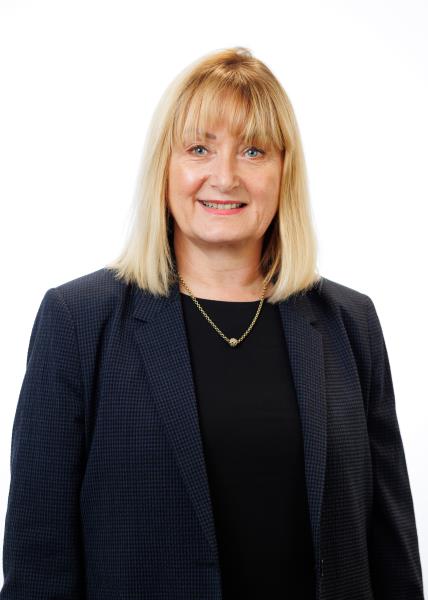16 October 2024
Lesley Holt, UKTIN Lead for Skills & Talent, WM5G
Key to this is diversifying the talent pool and encouraging greater inclusivity, addressing the industry’s skills shortage and helping drive better business outcomes for UK telecoms.
The future of telecoms depends on fostering diversity of thought and skills. According to McKinsey, corporations identified as more diverse and inclusive are 39% more likely to outperform their competitors, while research from Boston Consulting Group found that diverse management teams lead to 19% higher revenue. In addition, female engineers can offer valuable insights into the opportunities available today and how to attract more women to these careers.
The value and variety of telecoms roles
Roles in telecoms come in many different forms. Judith Ferrarin, Head of Barrier Busting and Connectivity at WM5G, is a testament to this. Judith’s career has spanned time-critical civil engineering projects – like overseeing the implementation of fibre infrastructure – to shorter-term projects, like acquiring the land needed to increase coverage at events like Glastonbury.
Many skills are required, including interpersonal skills and creativity, as well as more technical proficiencies.
Equally, there are many opportunities to learn those skills, through varied routes into the industry. Katrina Brown is an FTTP Installation Engineer at Quickline, who started at the company with no experience in the field. She says, “I was fully signed off within three months of starting, and I can now do installs on my own. I can use drills, climb poles, splice, and I’ve got qualifications for underground safety and underground cabling.”
A career in telecoms is a way to contribute to critical national infrastructure, which is a key driver for many engineers. Reliable telecoms support everything from emergency services and education to economic growth and digital innovation, while the industry aims to tackle broad societal issues like rural connectivity and digital inclusion. Holly Marshall, an Independent Technology Consultant specialising in Telecoms, Position, Navigation and Timing, Signal Simulation, 5G and LEO Comms, says, “it feels good to be part of something which is so fundamental to a smooth-running society.”
Raising awareness of the variety and quality of roles in the telecoms sector, as well as its overarching value for society, can help address perceptions about telecoms – and encourage more women to consider it as a career.
The need for diversity of thought
Bringing a greater gender balance to telecoms is part of a wider imperative to expand the sector’s diversity of thought. Telecoms is constantly evolving, unearthing a multitude of complex challenges to be solved. Paulette Elliot, who has 30 years of experience in telecoms and IT service management, recalls being part of a joint venture project to implement and trial a ‘’tele/remote working’ pilot programme all the way back in 1994.
Today, issues vary from creating next-generation spectator experiences at the Olympics, to delivering faster comms to aeroplanes from low Earth orbit. This fast pace of innovation requires a range of people with unique voices to bring different perspectives and solutions.
Innovation projects taking place in the UK unite experts from business and academia; JOINER is the UK's first national accelerator programme towards 6G and beyond, interconnecting academic institutes, research labs and industrial partners to enable innovation within a collaborative experimental environment. The innovation ecosystem needs women in many different roles and companies. Time and time again, projects have illustrated the value of diversity of thought – and a broader talent pipeline will power even greater innovation.
Building a sustainable talent stream
In the fast-paced telecoms sector, there is always demand for skilled workers. However, recruitment efforts in the past decade haven’t yet created a sustainable stream of talent. According to techUK, there will be a shortage of 30,000 telecoms engineers over the next 10 years, with 60% of today’s engineers over the age of 50.
Tackling this embedded issue requires action from the entire telecoms ecosystem. We can start by telling the stories of women’s careers in telecoms, in ways that will reach young people in schools as well as women at later points in their careers.
It's also important for stakeholders across telecoms to create clearer routes into the industry for women. This can be as simple as reassessing recruitment strategies: for example, considering whether there is an overemphasis on formal qualifications, which may be unnecessary. Highlighting the many flexible working opportunities available may also help roles feel accessible to women with caring responsibilities.
At an industry level, it may be useful to name inclusion as a soft consideration in procurement, to incentivise concrete action amongst businesses of all sizes. Above all, the drive for diversity must be supported by existing members of the industry, particularly men in leadership roles, to encourage people to see that telecoms is a space that welcomes individuals from all backgrounds.
An industry for everyone
Expanding the talent pipeline – and the diversity of the people working in telecoms – is crucial to the future of the industry. UKTIN has established the Talent Advisory Group to bring together figures from across telecoms to address skills and talent challenges in the sector, and take action to increase diversity.
Careers in telecoms are both exciting and rewarding, and it’s crucial that people of any gender and background can thrive. As Holly Marshall says, “go for it with the confidence that there is a genuine need for more women. We bring different skills and insights which can help increase the pace of innovation – and that is rewarding. What’s not to like?”










